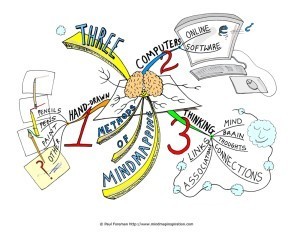Seven Tips for Shifting a Mindset in Your Organization
Article from blog.hbr.org by John Butman
We’re all fascinated by new ideas and how they can grab hold of us, influencing how we think and affecting how we take action. How does Atul Gawande (the checklist doctor) get inside my head, when others don’t? Why does Gwyneth Paltrow make me adjust my behaviors, when others can’t?
In business, especially, we’re inundated with new ideas—so many we can hardly process or evaluate them.
If you have tried introducing a new idea into your organization or community—especially if it’s an abstract idea like sustainability, diversity, or innovativeness—you know it’s tough. People may ignore your idea, pooh-pooh it, or just steal it. You put your energy, your reputation, and maybe your future, on the line.
Still, when you have an idea you think is valuable and could change things for the better, some inexplicable force may compel you to “go public” with it. You want to change a prevailing mindset and you’re willing to stick your neck out, at least a little, to do it.
The question is how, especially when you’re not Gawande or Paltrow, to change an organization from the inside when you don’t necessarily have a ton of formal authority on your side.
Take a look at what the “idea entrepreneur” does. This is the new type of cultural player—idea-driven people like Gawande and Paltrow, Michael Pollan (food), Cesar Millan (dogs), Blake Mycoskie (business = philanthropy), and many others—who reach large audiences and gain widespread influence.
 These are independent operators. They’re wealthy and famous. They publish books and appear on TV. But do their methods of idea-spreading apply to the office-dweller, the organizational citizen, the manager or executive? The answer is yes, with some modifications.
These are independent operators. They’re wealthy and famous. They publish books and appear on TV. But do their methods of idea-spreading apply to the office-dweller, the organizational citizen, the manager or executive? The answer is yes, with some modifications.
To illustrate, let me introduce Samantha Joseph, who works for Iron Mountain Incorporated, a leader in records storage and information management services. Sam is young, ambitious, and idea-driven: she believes that for-profit companies can drive significant business value when they take a strategic approach to social and environmental sustainability. After earning her MBA from MIT in 2009, Sam could not find a position in sustainability, so she joined Iron Mountain as a manager in strategy, knowing the company had no sustainability function and hoping to build it.
Sam saw opportunity. She plunged into the strategy job, but also began to work on bringing the idea of sustainability to Iron Mountain—an exciting if daunting task, considering the number of employees, locations, facilities, trucks, and other real assets involved.
Here are some of the things that big-time idea entrepreneurs do that Sam adapted for her quest:
Accumulate evidence
To gain influence for an idea, you need an awful lot of supporting material—data, references, cases, stories, and analysis—which can take decades to gather. Sam didn’t have that long, but she did accumulate enough material to make her the “resident expert.” It took her a year to develop her case—largely on her own time—before she started talking about sustainability in public. But she was talking privately with lots of people all the while: gathering opinions, refining the ideas and practices, making connections and gaining supporters.
Develop practices
An idea is an abstraction that won’t produce change until you provide people with specific, practical ways to put it into everyday use. Cesar Millan’s ideas get their teeth from his training methods of “calm assertiveness.” Sam worked with colleagues from across Iron Mountain to develop a volunteer program, a solar energy pilot, and a strategic charitable partnership—which got people doing sustainability without having to pledge allegiance to a theory first.
Create a sacred expression
Practices without theory are nothing more than tips and techniques. You need to find your best form and use it to create a “sacred” expression—a talk, a video, a written piece, a visual—the most complete, authoritative, and compelling articulation of your idea that you can manage. Sam put together a short video that made the case, showed how Iron Mountain was involved with the community, and got people energized and emotionally engaged.
Encourage “respiration” around your idea
Sam did not expect to do a TED talk or appear on Colbert, but she needed to engage with the audiences who would be most affected by, and most able to implement, the sustainability idea. The only way to get an idea breathing on its own is to show up, in person. Sam put together a road-show and visited many of Iron Mountain’s corporate departments and facilities, conversing and responding to questions. After she left, people kept talking. The idea started to come to life.
Read entire article on blog.hbr.org
The post Seven Tips for Shifting a Mindset in Your Organization is one of many from experts around the net. Read other interesting posts herethey are an awesome expert from the site listed above



